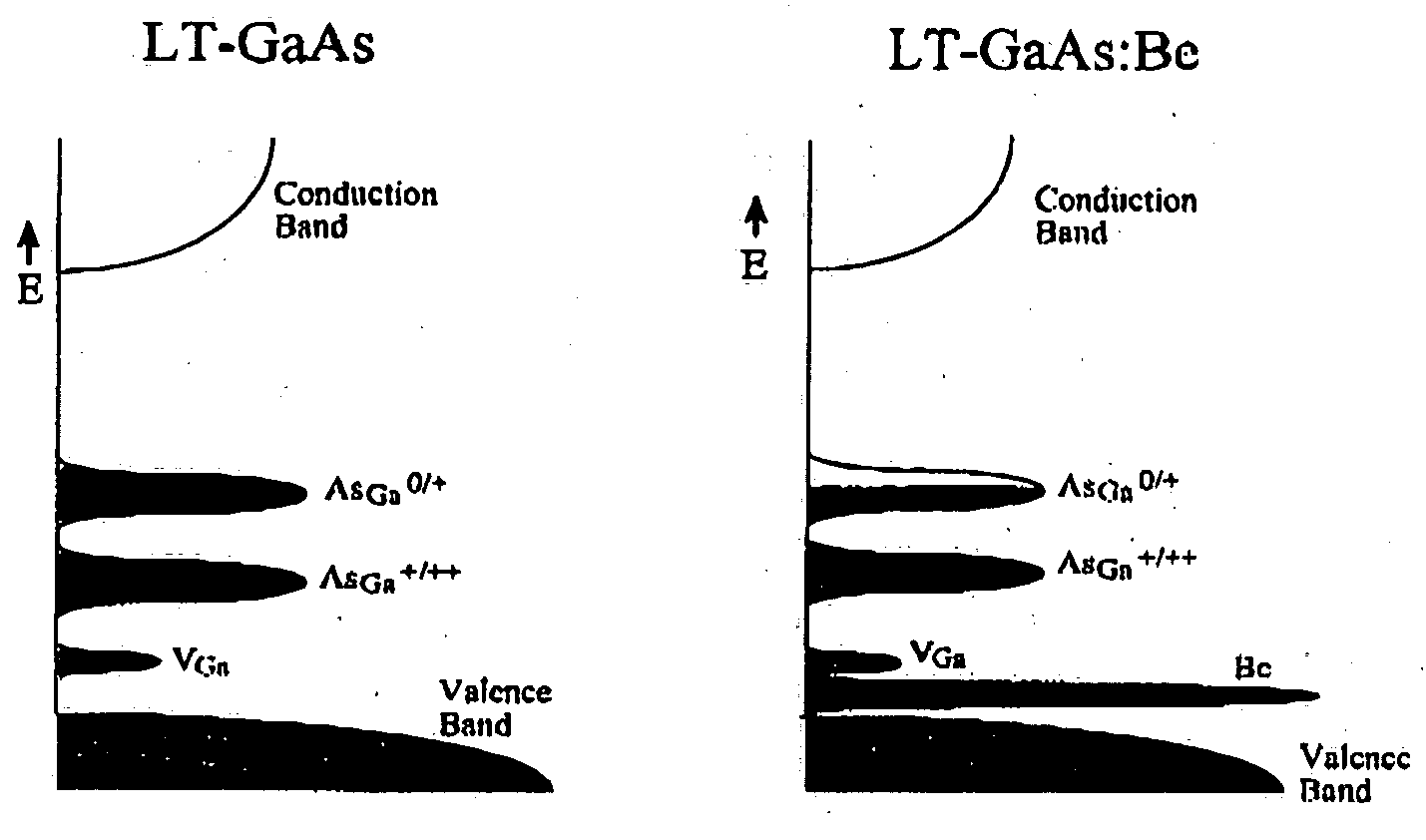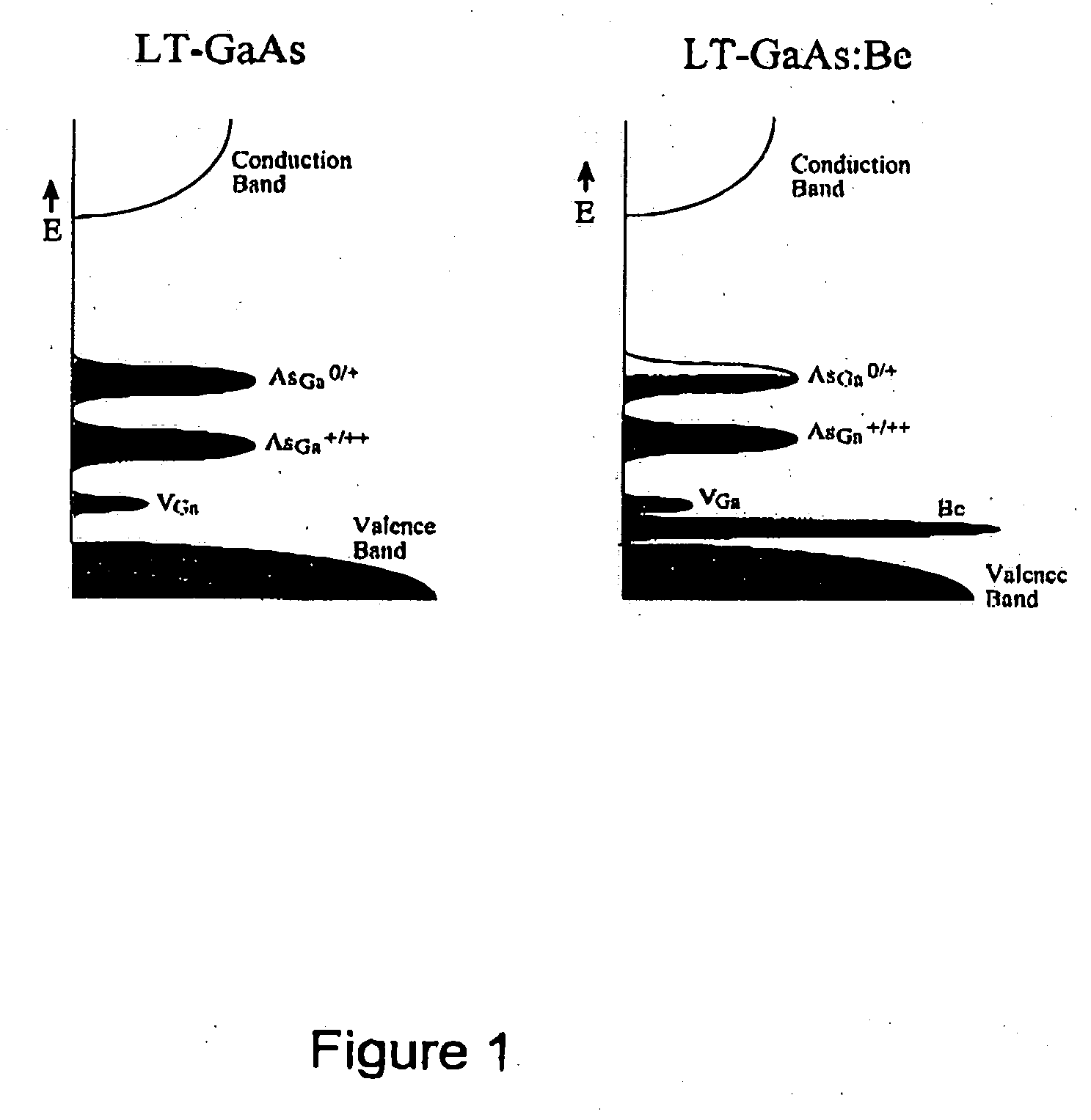Doping-assisted defect control in compound semiconductors
a compound semiconductor and defect control technology, applied in the field of thin film epitaxy of compound semiconductors and iiiv compound semiconductors, can solve the problems of lt-gaas formation typically not highly reproducible, conductivity may be undetected, and the thickness of compound semiconductors is reduced
- Summary
- Abstract
- Description
- Claims
- Application Information
AI Technical Summary
Benefits of technology
Problems solved by technology
Method used
Image
Examples
Embodiment Construction
After considering the following description, those skilled in the art will clearly realize that the teachings of the invention can be readily utilized in the fabrication of low temperature compound semiconductors, particularly, LT-GaAs. To be concrete in our discussion, we describe in detail the example of LT-GaAs doped with beryllium (Be). However, it will be apparent to those having ordinary skills in the art that similar procedures can be used with other compound semiconductors and employing dopants other than Be. Specific materials and properties are mentioned where appropriate.
Since Smith et al. (1988) reported the growth of GaAs at low temperatures (TG=200 deg. C.) for buffer layer applications [1], the research on highly non-stoichiometric GaAs has continuously increased. The interest in low temperature (LT) GaAs is focused on two electronic properties. First, the material exhibits ultra-fast carrier trapping times (<1 ps), when grown below TG=230 deg. C. [2], which c...
PUM
 Login to View More
Login to View More Abstract
Description
Claims
Application Information
 Login to View More
Login to View More - R&D
- Intellectual Property
- Life Sciences
- Materials
- Tech Scout
- Unparalleled Data Quality
- Higher Quality Content
- 60% Fewer Hallucinations
Browse by: Latest US Patents, China's latest patents, Technical Efficacy Thesaurus, Application Domain, Technology Topic, Popular Technical Reports.
© 2025 PatSnap. All rights reserved.Legal|Privacy policy|Modern Slavery Act Transparency Statement|Sitemap|About US| Contact US: help@patsnap.com



